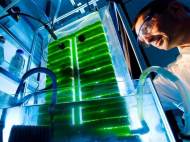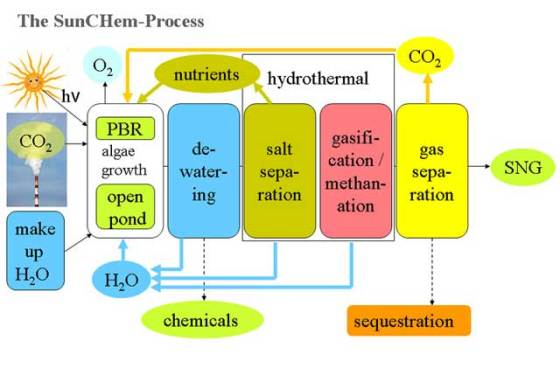SunCHem process turns microalgae into natural gas
 Researchers from the École polytechnique fédérale de Lausanne (EPFL) and the Paul Scherrer Institute managed to develop a bioreactor which uses microorganisms to produce methane gas. The technology could be used in sustainable and decentralized production of biosynthetic natural gas from microalgae – thus avoiding the use of crops and lessening the need for fertile land used in food production.
Researchers from the École polytechnique fédérale de Lausanne (EPFL) and the Paul Scherrer Institute managed to develop a bioreactor which uses microorganisms to produce methane gas. The technology could be used in sustainable and decentralized production of biosynthetic natural gas from microalgae – thus avoiding the use of crops and lessening the need for fertile land used in food production.
Developed by Christian Ludwig and his team from the Paul Scherrer Institue and EPFL, the technology shows great promise since algae have one notable advantage over other sources of biomass – they generate far more dry matter compared to other sources. In favorable conditions, they can generate 30-55 tons of dry matter per hectare per year – five to ten times more than sources such as corn, soy, or sugar cane.
“Growing algae consume CO2 from the atmosphere. As it transforms, it re-emits the CO2 but in a concentrated form that we might be able to sequester and store, for example, underground. This system also produces renewable biogas, thus avoiding the problem of competition with food crops”, said Ludwig. “And above all, they can be cultivated without soil, simply in bioreactors exposed to sunlight, thus avoiding the use of fertile croplands that are needed for food production.”
Named SunCHem, process transforms the algal biomass into methane via catalytic hydrothermal gasification. The yield of this process where the biomass produced in these “photo-bioreactors” can be transformed into natural gas is 60-70%.
“This device doesn’t require any solvents and can use non-potable water”, said Mariluz Bagnoud, a scientist from EPFL’s Institute of Environmental Engineering. “In addition, the nutritive elements the algae need, such as phosphorus, are recycled in the process and re-injected into the culture medium. It is an important breakthrough because these resources are limited, too.”
SunCHem process allows improvements in terms of transport and use, since it can simply be injected into an existing gas distribution network and be used decentralized production in smaller clusters. That makes it suitable for use in Switzerland – a country which will depend on its natural gas power plants as it enters a transitional phase of abandoning nuclear power.
For more information, visit the SunCHem project webpage, where you can find annual reports of its development, as well as short project description.










Leave your response!